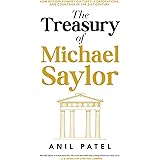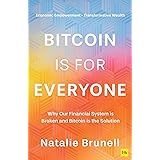Could the United States genuinely orchestrate a “crypto reset” to manage its colossal national debt? The accompanying video explores a thought-provoking claim made by a senior Russian advisor, Anton Kobyakov, suggesting that the U.S. is plotting to devalue its staggering $37 trillion debt using stablecoins and Bitcoin. This strategy, according to Kobyakov, involves moving the world into a “crypto cloud,” ultimately leaving other nations bearing the brunt of the devaluation. Understanding such a complex proposition requires a careful examination of economic principles and emerging digital currency trends.
Unpacking the Russian Advisor’s Claim on U.S. Debt Devaluation
Recently, at the Eastern Economic Forum in Russia, Anton Kobyakov, a longtime senior advisor to President Vladimir Putin, delivered a statement that captured significant global attention. He posited that the United States is actively working to redefine the existing rules of both gold and cryptocurrency markets. Kobyakov explicitly stated that Washington aims to push the global economy into a new “crypto cloud” framework. This would serve as a mechanism to secretly devalue the nation’s immense $37 trillion national debt.
The concept of placing a significant portion of U.S. national debt into stablecoins, followed by a strategic devaluation, represents a bold economic maneuver. While this theory might initially appear extreme, similar ideas have been voiced by prominent figures in the financial world. Notably, Michael Saylor, the billionaire CEO of MicroStrategy, previously advised former President Donald Trump to consider a radical shift: selling all U.S. gold reserves and investing heavily in Bitcoin. Saylor’s vision was to demonetize gold, inflict financial pain on geopolitical adversaries, and simultaneously establish the U.S. as the dominant force in the world’s reserve capital and currency networks through Bitcoin. These discussions highlight a growing recognition of digital assets’ potential impact on sovereign debt and global finance.
Understanding Debt Devaluation: An Economic Overview
What exactly does it mean to devalue debt, and how does this process unfold within a national economy? Debt devaluation refers to the deliberate reduction in the real value of a nation’s outstanding debt through monetary policy. It typically does not involve outright default or a refusal to pay; instead, it lessens the purchasing power of the money used for repayment.
Consider a simplified scenario: if the global money supply expands without a corresponding increase in goods and services, the purchasing power of each unit of currency diminishes. This phenomenon, widely recognized as inflation, makes everything more expensive. When a government with control over the world’s reserve currency prints or creates new money, it effectively dilutes the value of existing currency. Consequently, repaying a debt with these newly created, less valuable dollars means the creditor receives the same nominal amount, but its real-world purchasing power is significantly reduced. This approach has a long historical precedent, with examples seen after World War II, throughout the inflationary 1970s, and more recently following the global pandemic. In each instance, increased money supply led to more dollars chasing the same goods, driving up prices and devaluing outstanding debt.
The Role of Stablecoins in a Potential Global Crypto Reset
Given the historical context of debt devaluation, the crucial question emerges: how could stablecoins specifically enable or amplify this process on a global scale? Stablecoins are cryptocurrencies designed to maintain a stable value, typically pegged to a fiat currency like the U.S. dollar. They achieve this stability by backing their value with reserves, often including short-term U.S. Treasury securities.
This backing mechanism is pivotal. When demand for dollar-pegged stablecoins like USDT or USDC grows internationally, it indirectly increases demand for the U.S. dollars and Treasury securities that underpin them. This creates a self-reinforcing cycle, supporting the dollar’s global position. If the U.S. government were to pursue policies that lead to inflation, the burden of this inflationary “tax” would extend beyond American citizens. It would be effectively exported worldwide through the stablecoin system, as individuals and entities holding these digital dollars would also experience a loss in purchasing power. Therefore, stablecoins offer a distributed mechanism to share the impact of U.S. monetary policy globally, leveraging the ubiquitous presence of smartphones for broad adoption.
Distribution and Control: The Core Advantage
The unique appeal of stablecoins for such a strategy lies in their blend of distribution and perceived neutrality. Unlike direct government-issued Central Bank Digital Currencies (CBDCs), stablecoins can be created and managed by private companies. This private issuance can circumvent some of the political baggage typically associated with government financial instruments. Under frameworks like the GENIUS Act, approved issuers—including banks, trust companies, or certain nonbank firms—could issue regulated, dollar-backed stablecoins within the United States. This opens the door for major tech companies, for instance, to create their own digital currencies, potentially garnering official approval through strategic partnerships and investments. Such a model offers a level of control akin to a CBDC but with a more palatable, privately branded façade, making it a powerful tool for extending monetary influence without overt government action.
Global Distrust and the Flight to Gold
Despite the potential efficiency stablecoins offer for monetary policy, significant global skepticism and distrust surround their widespread adoption. Many countries view a move toward a new digital dollar system with caution, opting instead to increase their holdings of physical gold. This trend reflects a historical preference for gold as a universal store of value, particularly when confidence in fiat currencies or new digital assets wavers.
The concerns regarding stablecoins largely revolve around issues of auditability and the potential for rule changes. While stablecoin issuers like Tether and Circle publish regular attestations of their reserves, these reports often rely on U.S.-based auditors and require a degree of trust from foreign governments and individuals. The fundamental problem is the lack of a fully transparent, real-time auditing mechanism that can be universally trusted across borders. Furthermore, historical precedents, such as President Nixon’s decision in 1971 to unilaterally detach the dollar from gold, serve as a potent reminder that governments can alter financial rules unexpectedly. From a global perspective, this demonstrates that promises of backing or redemption can be unilaterally revoked, making a “trust us” digital token a difficult proposition for sovereign nations.
The Inevitable Path: Private Innovation Preceding Public Adoption
Considering these complexities, the question arises: will the U.S. government ultimately pursue a strategy to devalue its debt through a crypto reset? While a direct, overt government initiative might seem unlikely due to potential global panic and geopolitical backlash, an alternative, more subtle path appears plausible, even inevitable. This approach involves leveraging private sector innovation to pave the way for eventual national adoption.
For example, Michael Saylor’s public advocacy for a U.S. Bitcoin strategic reserve, while influential, did not result in direct government Bitcoin purchases. Instead, companies like MicroStrategy have effectively become public proxies for Bitcoin accumulation, amassing substantial holdings. This private-sector led accumulation strategy allows for the integration of Bitcoin as a strategic asset without the immediate political and economic fallout of a government-led initiative. Should Bitcoin prove its long-term strategic value, the U.S. government could then adopt a model similar to its historical practice of taking stakes in vital private companies, such as Intel. This strategy allows the government to observe private experimentation and, once a technology is deemed too significant to ignore, absorb it nationally. This approach is more gradual, deniable, and significantly reduces the immediate risks associated with a direct government intervention in volatile markets. Such a trajectory suggests that the core assumption of a U.S. debt devaluation through digital assets, as outlined by the Russian advisor, remains highly relevant for understanding future economic policy.







